Skiing the Great White North
Skiing in Alaska holds the highest status in the world of backcountry skiing and big mountain riding. It conjures up images of big rowdy spines, giant faces, and skiers outrunning avalanches nipping at their tails behind them. It is where the movies are shot, magazine covers, photo shoots. Alaska is the big leagues.
Brant was one of my first touring partners in Spokane, starting on the humble hills of the Inland Northwest. When he lived in Revelstoke, I visited him for a few days. The next winter, he ended up in Anchorage and invited me to come skiing in Alaska. I had briefly backpacked in the Brooks Range of Northern Alaska but had never skied in Alaska. Then the pandemic happened and the trip got delayed a few years. Finally, this winter we made it happen.
I have written individual trip reports for each notable tour we did, so here I will just give an overview of the trip and the major highlights and lessons learned.
The Story
When Sam and I arrived in Anchorage, it seemed that I had once again impeccably nailed the absolutely wrong time to arrive. A giant storm brought rain to Turnagain Pass (and 4 feet of heavy snow above). A D4 avalanche went off naturally in the Front Range, taking out some homes. Hatcher Pass was supposedly a buffet of crusts. It looked bleak. Sam and I went out to Arctic Valley the first afternoon and got blown over by 50 mph gusts and skied breakable crust back to the car. Ouch. Welcome to Alaska.
At dinner that night with Brant’s friends, they convinced us to try the classic Bomber Traverse, a scenic loop in the Talkeetna Mountains near Hatcher Pass. It was mostly skinning and gliding and not much actual skiing, but nice weather promised great views. The Bomber Traverse turned out to be an incredible day with some actual decent skiing. But more than anything, the scenery was mind blowing. The mountains here are just different. The peaks were just five to seven thousand feet, but felt enormous. I immediately saw that the ski potential in just this little corner of one mountain range was incredible. These mountains had hooked me.
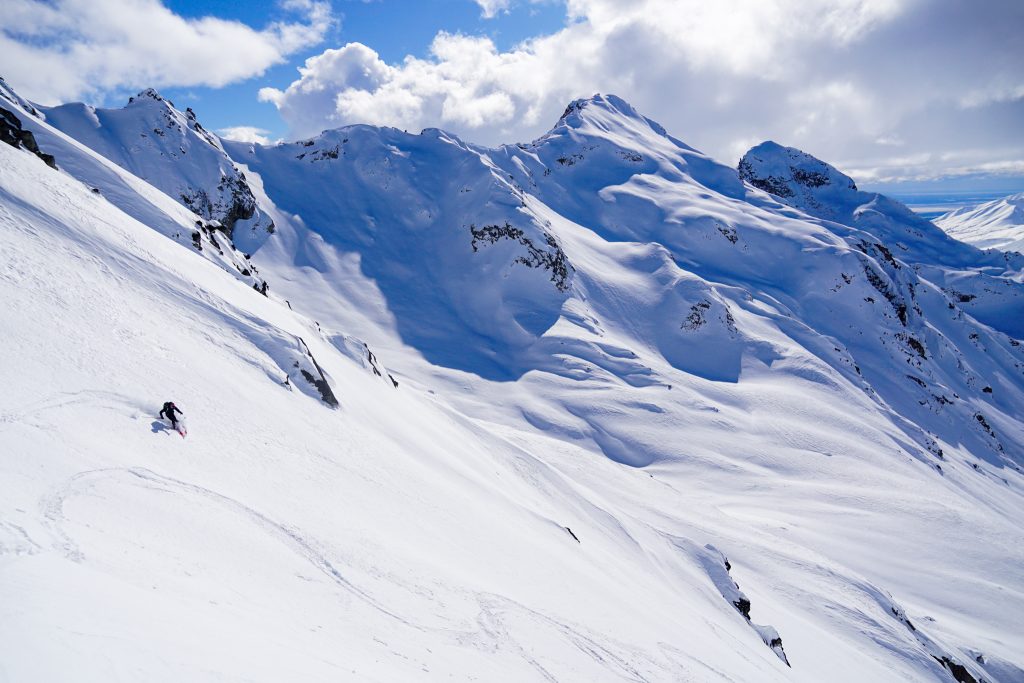
On Sunday, we met up with Steve and farmed some decent powder at Manitoba, which is just about one of the only safe zones in the Turnagain Pass area. Storm skiing is not really a thing in Alaska. Tree line is at the road, and there is not really any place to hide form the big alpine slopes. That is why the mountains feel so big here. Locals do not really storm ski; they just go where the storms are not, since if Turnagain is getting nuked that means Hatcher is likely in the clear, and vice versa.
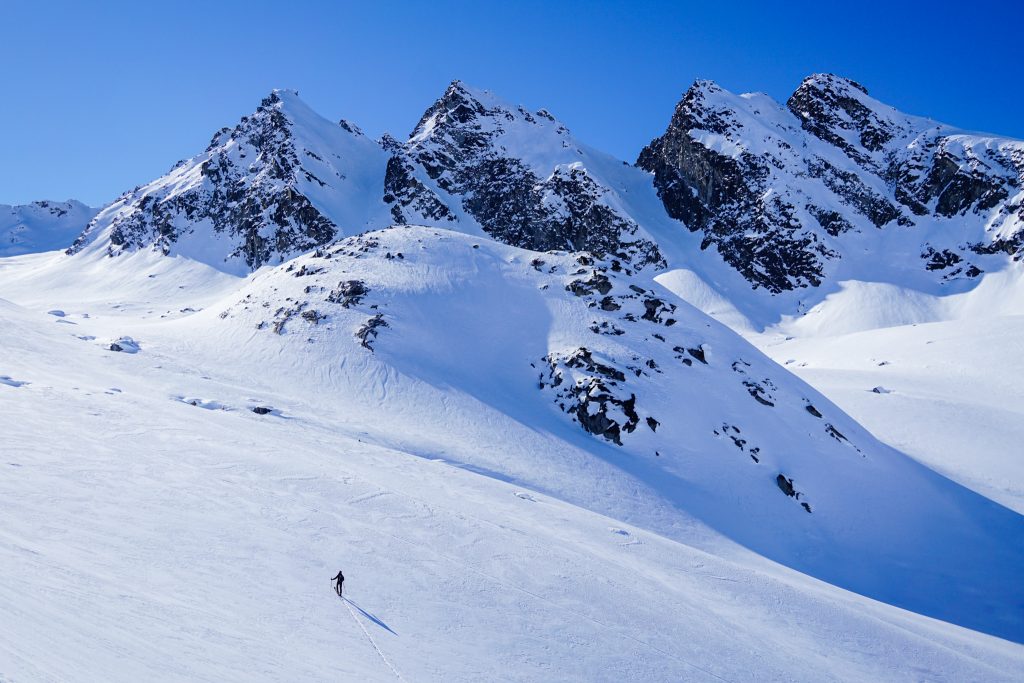
One thing that is striking about this region of south central Alaska is how strong the rain shadows are. Whittier, Alaska receives over 150 inches of precipitation a year while Anchorage, just an hour drive away, gets under 20 inches! Palmer, gateway to Hatcher Pass, is closer to a dozen inches. The variation in weather and snowpack creates a lot of opportunities to chase different conditions. From Anchorage, you are just over an hour away from an arctic maritime snowpack (Turnagain) and continental snowpack (Hatcher). The Front Range, which lies only 20 minutes away, is somewhere in between.
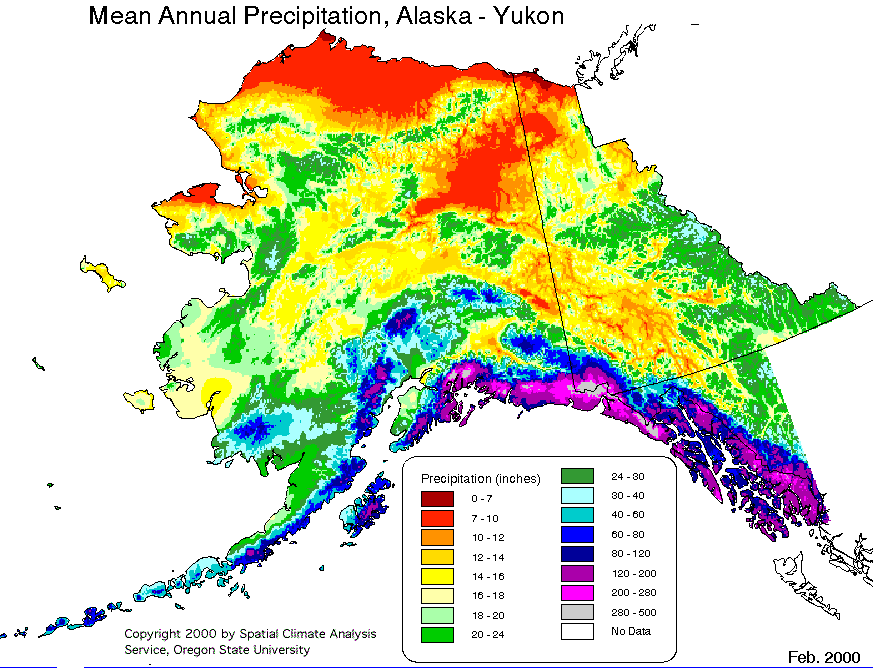
My legs were tired from two big days chasing the boys around on my heavy touring gear. I had been told that Alaska meant skiing big lines directly above the road, so I brought my beef gear for sending the gnar. While this is true for Turnagain and Thompson, Hatcher Pass requires longer approaches, especially with the road closure this year. So we took a few days to rest and work. Sam had to fly back home for work unfortunately.
Conditions continued to be stormy and warm at Turnagain, so Brant and I opted for another long day at Hatcher on Wednesday. I drew up the Snowbird Super Tour, a creative tour around the famous Snowbird Hut that incorporated some mellow glacier skiing along with a final summit. During the Bomber Traverse, I felt like a tourist following a guidebook. But on this day, I felt like a local, linking terrain with hidden weaknesses and skiing the rarer lines. It is special to go to a new place and get to execute your own plan on just your second day out. Brant’s knowledge of the area definitely helped us piece together what made sense with aspects and conditions. This was a magical day that fed the depths of my soul.
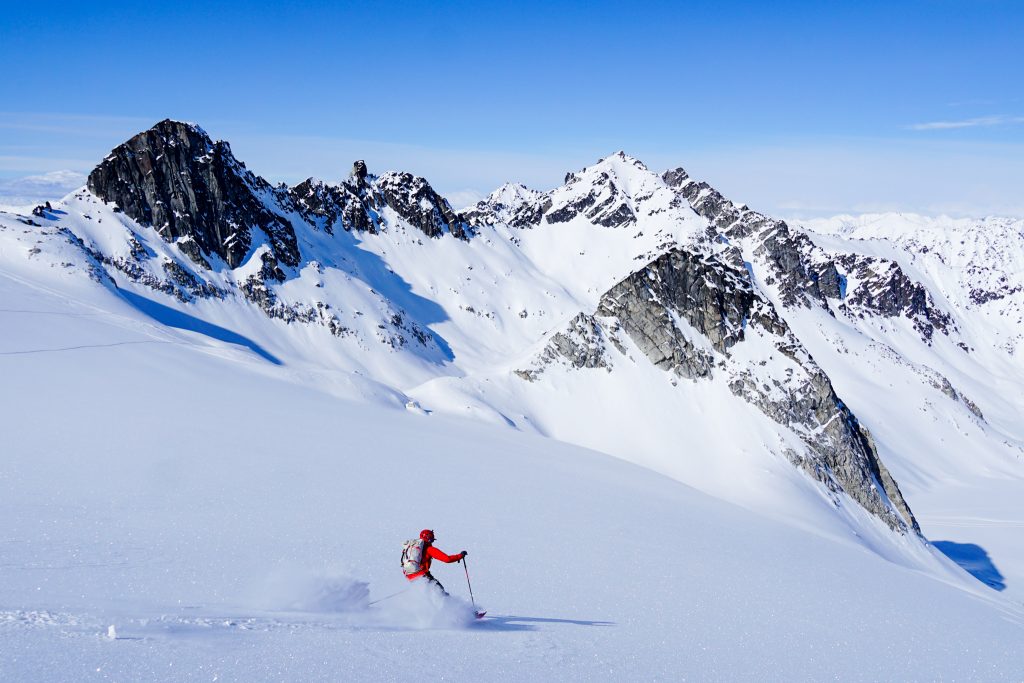
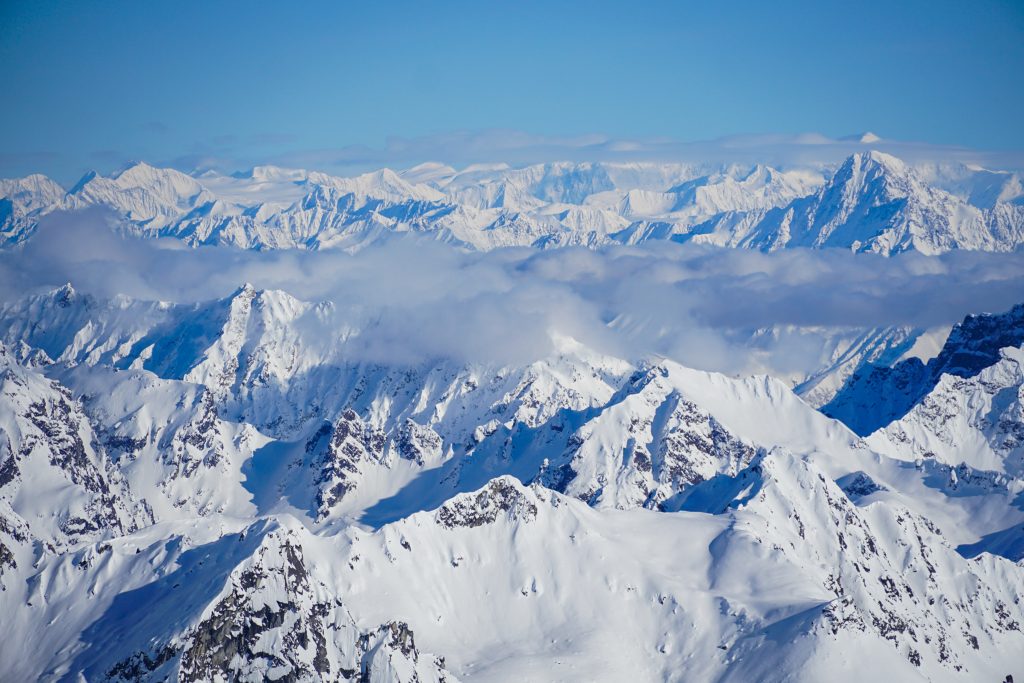
The weekend looked once again a bit too stormy for Turnagain. We heard that Thompson Pass, five hours away, had good snow and stability, but the forecast also looked a bit cloudy. We decided to take a risk and drive out there for three days, staying in Valdez. If nothing else, the drive is supposed to be one of the most beautiful of all drives.
The drive was incredible. We passed high above the Matanuska Glacier, gazed at an infinite number of rad Chugach peaks, gawked at the giants of the Wrangells looming above interior Alaska, and finally watched clouds race above the Thompson Pass iconic peaks. Even if you don’t step foot out of the car, I 100% recommend this drive, on a clear day.
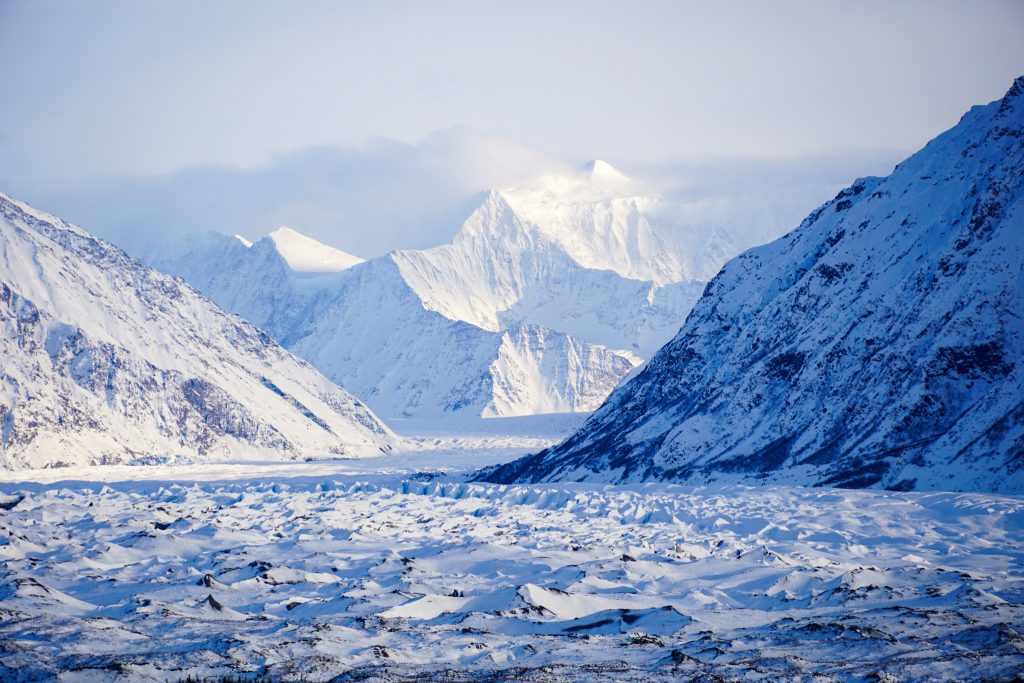
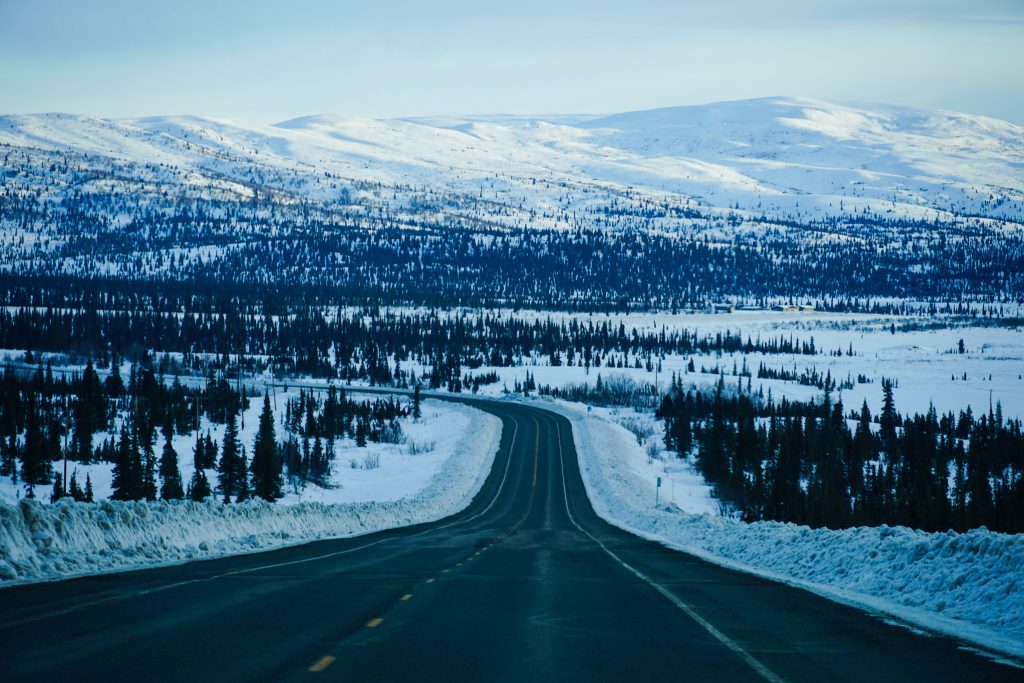
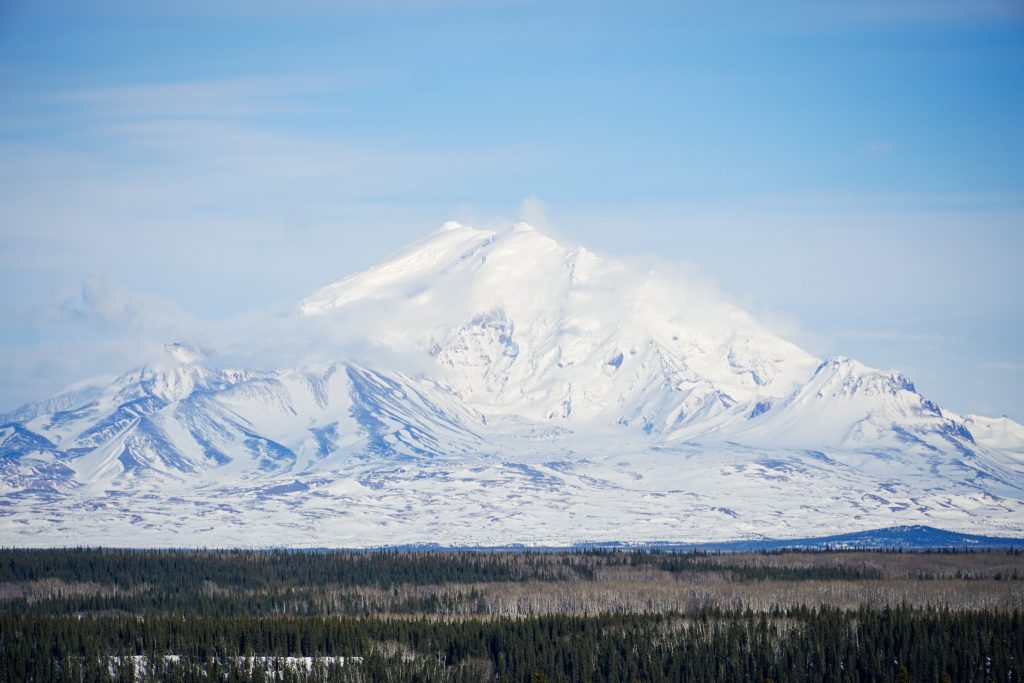
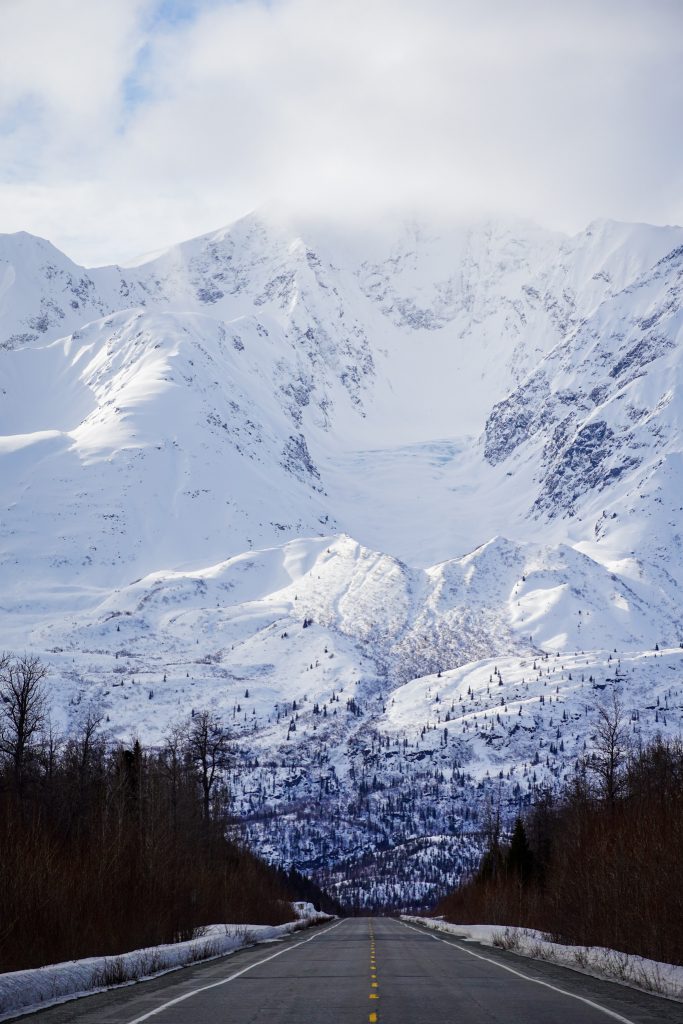
We luckily found clearing skies and so visited the Stairway Chutes Friday afternoon. This is an incredibly stacked zone with literally dozens of chutes right next to each other on each side of the valley. Imagine the Kendall Adventure Zone, but easier to access, less complicated, and longer lines.

In the evening, we drove over Thompson Pass proper and down into Valdez. Valdez might be the most beautiful setting for a town that I have ever seen. Just crystal clear blue waters, giant peaks and glaciers rising above town. We saw an otter in the bay, and I guess the ecosystem has made a pretty strong comeback since the oil spill. When I dreamt of costal Alaska, this was exactly what I envisioned. It is pretty magical there, at least when it is not raining.

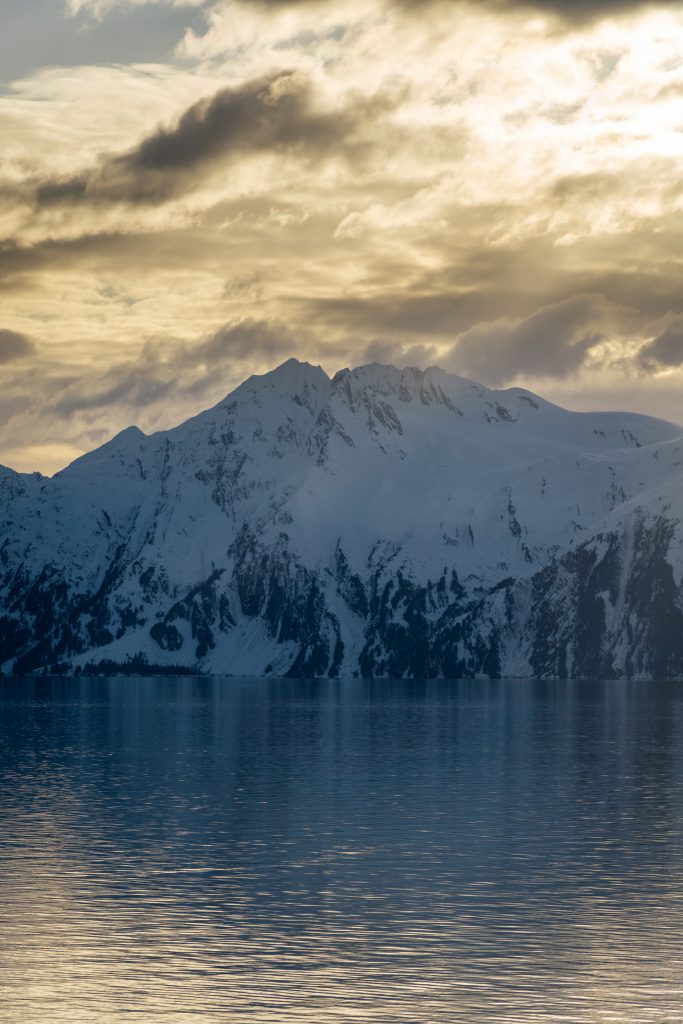
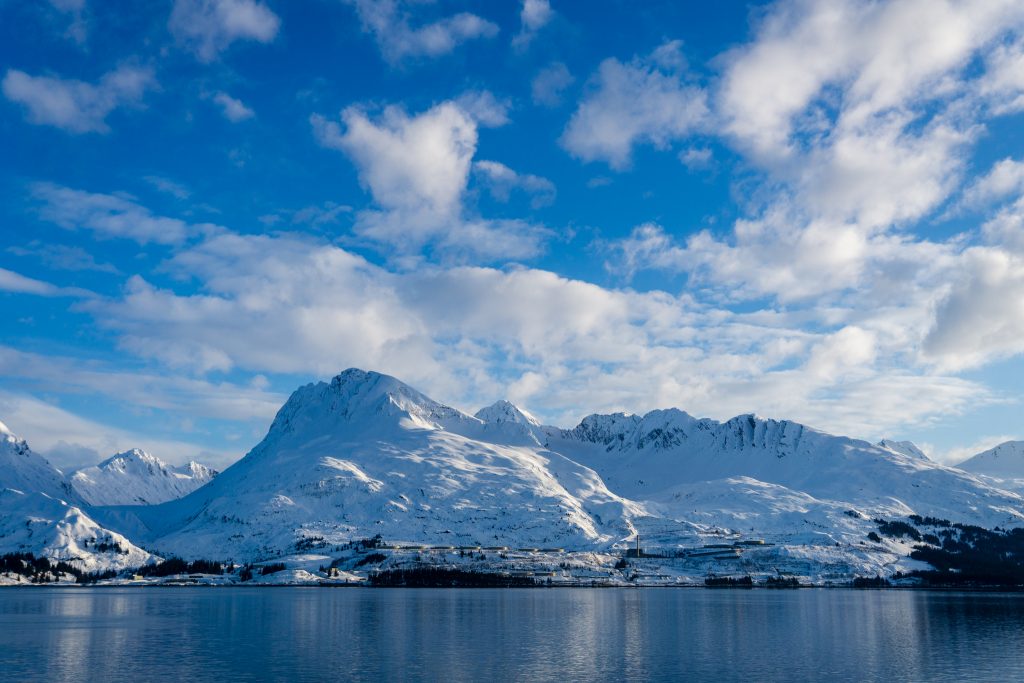
Saturday was our only real full day, so we decided to go big and try to linkup some peaks and lines. What transpired was the Berlin-Cherry-Ice Linkup. I am not exaggerating when I say this was one of my top five days ever on skis. The combination of ridiculous views, epic lines, and quality snow were possibly unmatched. We took a risk, trying to connect features that we were not sure would go, and once again, it paid off. It seems that everything goes in Valdez.

Literally screaming down the final 4000 ft run of untracked powder was transcendent.

I had heard that Thompson Pass, aka Valdez, was “the Real Deal”. Turnagain, Hatcher, the other spots in Alaska’s “low lying” mountains (these are “low lying”, because the Alaska and Wrangell Mountains are 10-20k ft tall) are incredible, but it is true that Valdez is on a different level. The peaks just feel like they are purpose made for steep skiing. The coastal snow sticks to every face and then dries out under high pressure, creating the dream riding conditions. This place is so steeped with history of big mountain riding, heli-skiing, and human powered touring. It was incredible just to get to witness these classic test pieces and be inspired by the same lines that inspired the greats like Doug Coons and Joe Stock.
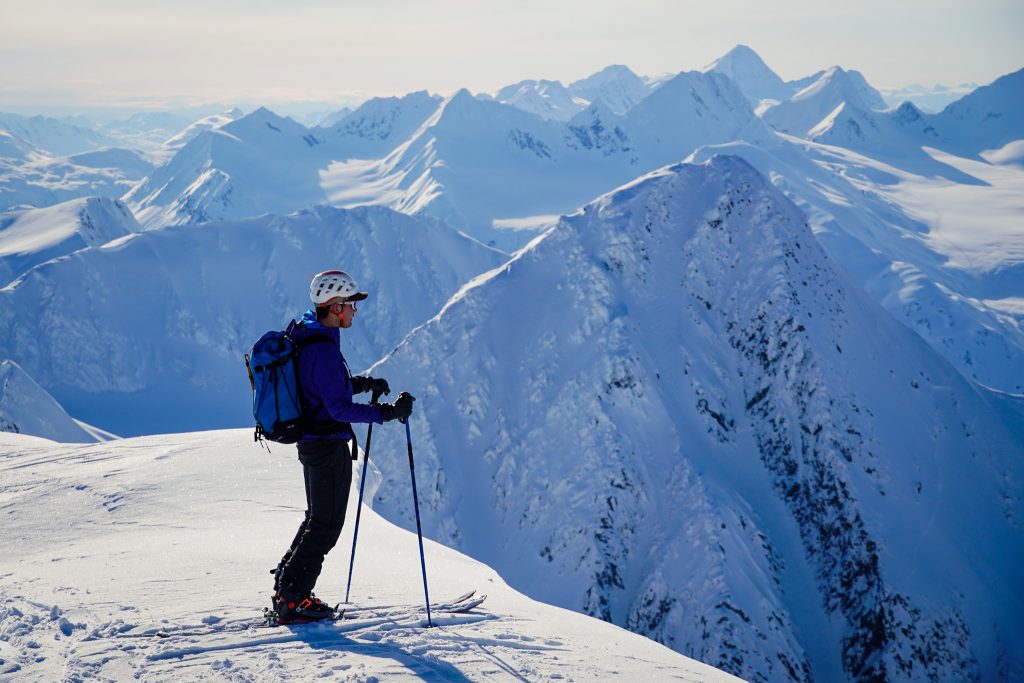
Skiing in Alaska can be intimidating. It certainly felt that way to me, as someone who did not learn to ski until five years ago. But the truth is that, given good conditions (and that is an important qualification), ski mountaineering in the Chugach and Talkeetnas is actually very accessible, both in absolute terms and ability level. 90% of the common touring starts right above the road, with no steep forest to skin, no weird creek crossings, no cliffs to navigate. You can see your line from the car, you go up it, then ski down it, right back to your car. There are plenty of moderate descents to complement the super gnarly ones you see in the movies. Honestly, these Alaskan mountains are far more beginner friendly than the Cascades, which have often complicated approaches, challenging skintracks, bad snow, and hard outtracks. If you can make it at Snoqualmie, you can make it in Alaska. We might not have the epic terrain, but we do have a pretty epic training ground just an hour from Seattle, so be grateful for that.
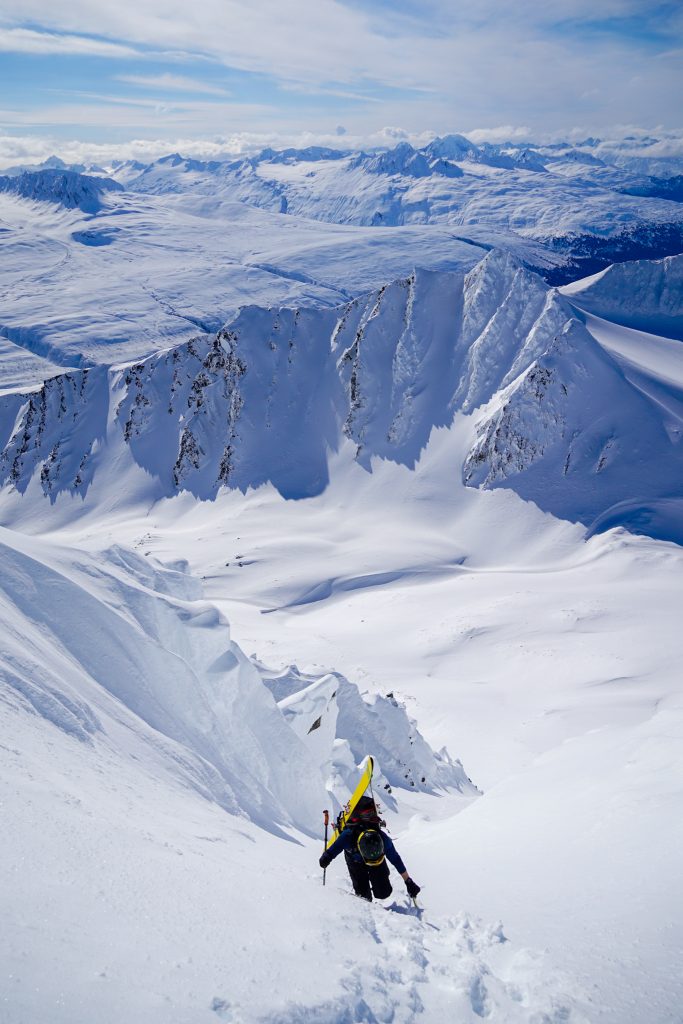
Sunday was our final day, so we opted for a shorter day exploring the upper reaches of Mt. Diamond. We had our third straight day of bluebird weather despite a persistent “mostly cloudy” forecast. It was beautiful and bittersweet to say goodbye to this winter dreamland.

The drive back to Anchorage was pleasant and I flew home the next day. I feel incredibly grateful to have gotten the opportunity to explore such a beautiful place under relatively good conditions. I feel grateful for vaccines, the gradual reopening of travel and borders, and the freedom to pursue my passions. And of course, I am grateful to Brant for hosting me and showing me around. Skiing in the low lying mountains of south central Alaska is vast and incredible. This was a dream week for me, but really we just scratched the surface. I am stoked to go back to Alaska for more.
Lessons Learned
Sleds are King
It is Alaska and there are no rules. Sleds go anywhere and with no trees, it is easy for them to get anywhere. Do not expect solitude from sleds if you can tour it from the car in a day. That being said, we found sledders to be generally very respectful to skiers. They mostly just sledded up the valleys to get places, and did not track out the desirable ski terrain.
Alaskans Love the Steep Skin Tracks
I always complain about the “Seattle Skintrack” that goes straight up steep slopes, but Alaskans are even worse. They literally go straight up 20-25 degree slopes. It is absolutely heinous. So even though we were in frequently traveled zones, I usually had to set a new skin track the entire day since my body just cannot deal with those steep skinners. Oh well. Maybe I should stop complaining.
March to April is Prime
Brant had spoken to me about the mythical mid March to mid April window where you get longer days, nice weather, stable snow, and good powder. Weak layers heal up, it feels nice and warm in the sun, but the surface snow stays cold in the shade. This proved to be somewhat true. Turnagain was too warm and stormy. We nailed it with Thompson. I asked one of Brant’s friends, a guide at Valdez Heli, if we had gotten lucky, and he said “no: the sun comes and goes, but the snow and stability is nearly always this good at this time of year, if not better”. So this late winter / early spring is the window for skiing big lines in good snow, but it is obviously not a guarantee.
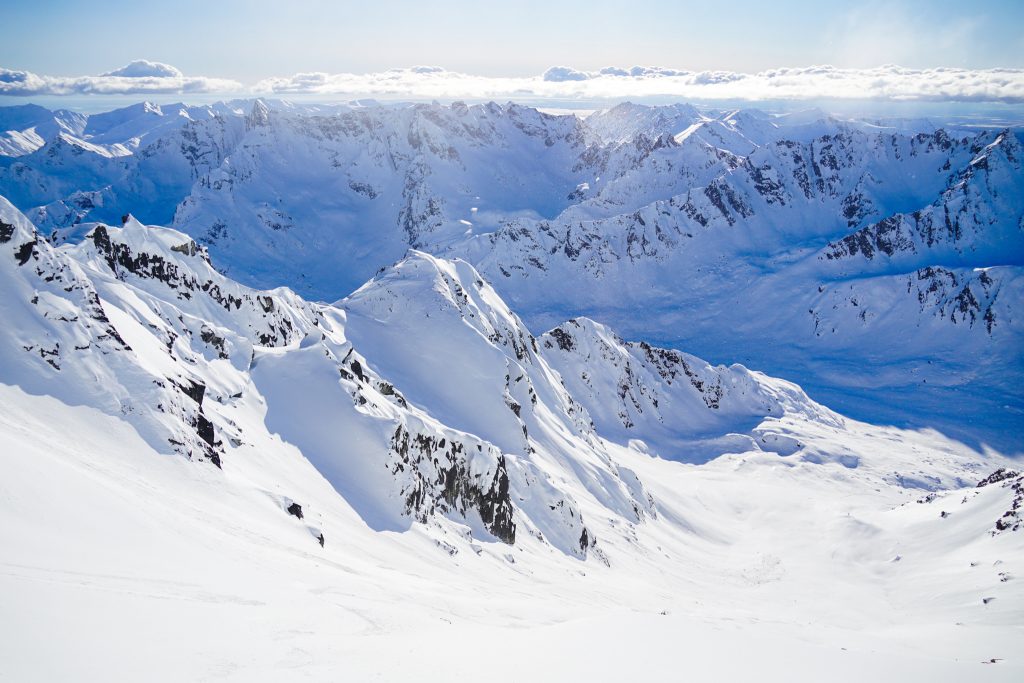
Get Comfortable with Less Information
The Turnagain, Thompson, and Hatcher Pass avalanche centers are not as well funded as NWAC. We are very lucky to have NWAC. NWAC Forecasters get out in each zone nearly every day and forecasts are published the night before. In Alaska, the forecast is not published daily, and it is only published the morning of. The websites are clunky and hard to use. Many zones, like the Front Range, do not even get a forecast. So be prepared to go out and make your own snowpack assessments.
For tour specific information, pick up a copy of The Alaska Factor by Joe Stock. This is a great guidebook, although lacking in the detail of the Volken Guide, giving an overview of all the different regions and access points. I love how it discusses weather and snowpack by region. This really helped me get an understanding of the layout of things.
What gear to bring?
Other than general touring gear, there is a lot of glacial travel out here. We never roped up on these coastal glaciers, which had a deep snowpack, but you still might want to carry the gear. The glaciers in the Talkeetnas are very chill and apparently do not even have much in the way of crevasses late season. Other than that, vert plates could help for booting steeps, although we managed without. Crampons and ice ax are a must have. Radios would be good for communication. Ultimately, I was happy with my beefy touring gear so I could ski to my full potential.
Do Not Fear the “Crowds”
Locals may complain about “crowds” during peak season, but their definition of crowds is much different than someone from Seattle. We went to Thompson Pass on a peak weekend, with Tailgate Alaska bringing in hundreds of sledders and skiers. And yet we still skied untracked powder days after fresh snow on a classic line. And got first tracks down a prominent couloir. The truth is, there is more skiable acreage on a single section of highway at Turnagain or Thompson than all of the accessible backcountry ski terrain within 3 hours of Seattle combined. And there are far fewer people. It is Alaska. Do not fear the crowds.
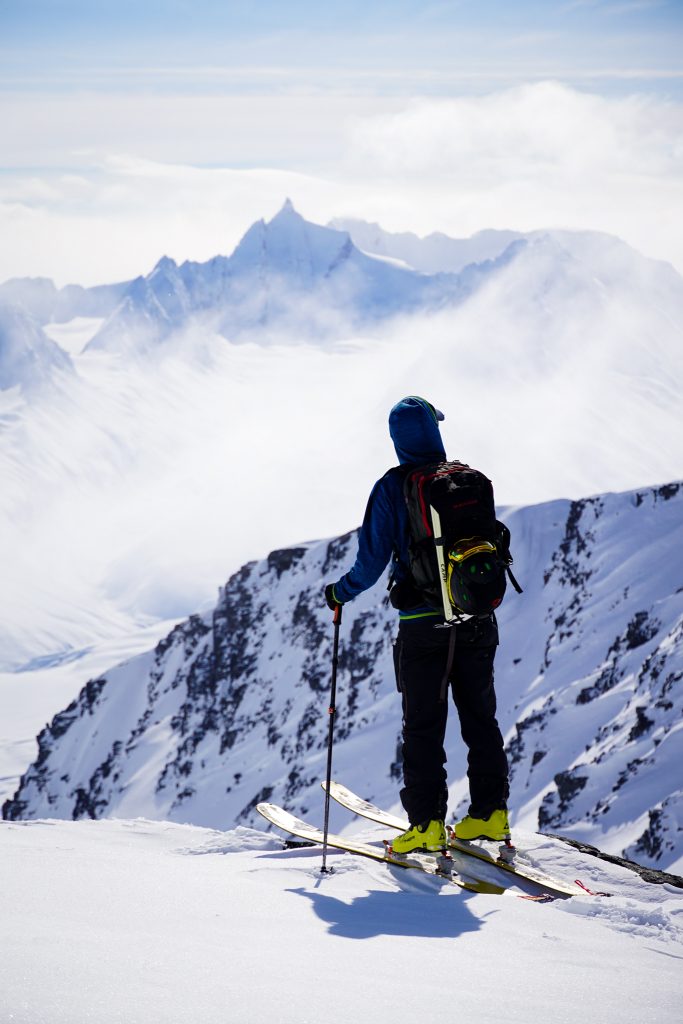
Praise the Alaskan Infrastructure
For a state with so few people and presumably less tax revenue, they sure as hell keep their roads in great condition. The highways have giant plowed pullouts every mile or two for recreationists. The big problem here in the Cascades is a lack of access. If we had half the amount of pullouts along Stevens Pass East as they have along Thompson (the snowiest pass in the country), it would greatly increase our access to different zones. Alaska just does it better.
The Snowpack is not as Deep as Advertised
Thompson Pass is advertised as the snowiest place in the country with 500 inches per year. But stepping out of the car to tour, I was surprised to find the snow only a few feet deep at the start. There is a difference between snowfall and snowpack. Snowpack is more dependent on snow water equivalent and Alaska’s powder comes in lighter than ours, so it contributes less to the snow water equivalent (SWE). In reality, the Cascades actually might accumulate more SWE, with some spots in the North Cascades approaching 100 inches SWE at peak. Stampede Pass, similar to Snoqualmie, typically maxes at 40 inches SWE, nearly the exact same as Turnagain. The Snotel site just east of Thompson peaks at just 20 inches of SWE. Obviously, the high Chugach like Mt. Marcus Baker likely gets far more snow, but those areas are not reasonably accessible without plane. The Alaskan tundra terrain needs far less snow to cover the shrubs, so less snow is needed to ski upon. The Alaskan snowpack also melts very quickly in April and May with the long days.
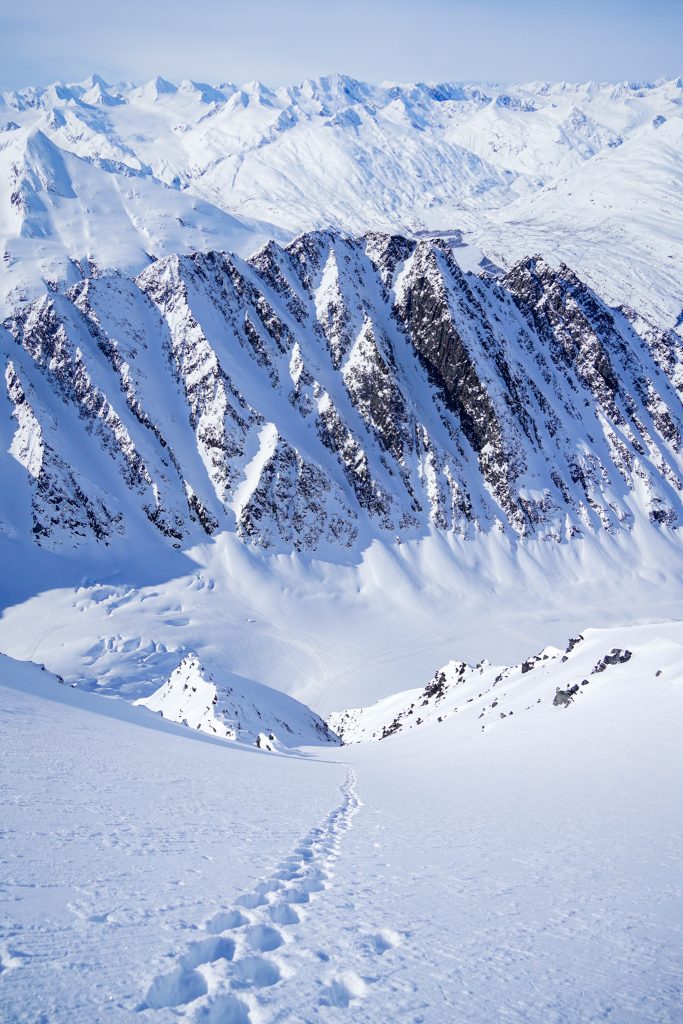
Be Flexible
If you fly into Anchorage, there are tons of different touring options at this time of year: the Front Range, Turnagain, Alyeska, Hatcher, and Thompson. The key to a successful trip is to stay flexible and follow the forecast. I would prioritize good stability and weather over good snow, because you cannot really hide from avalanche terrain in Alaska. Maybe your Plan A or B doesn’t fly, but believe me, in south central Alaska, you cannot really go wrong.
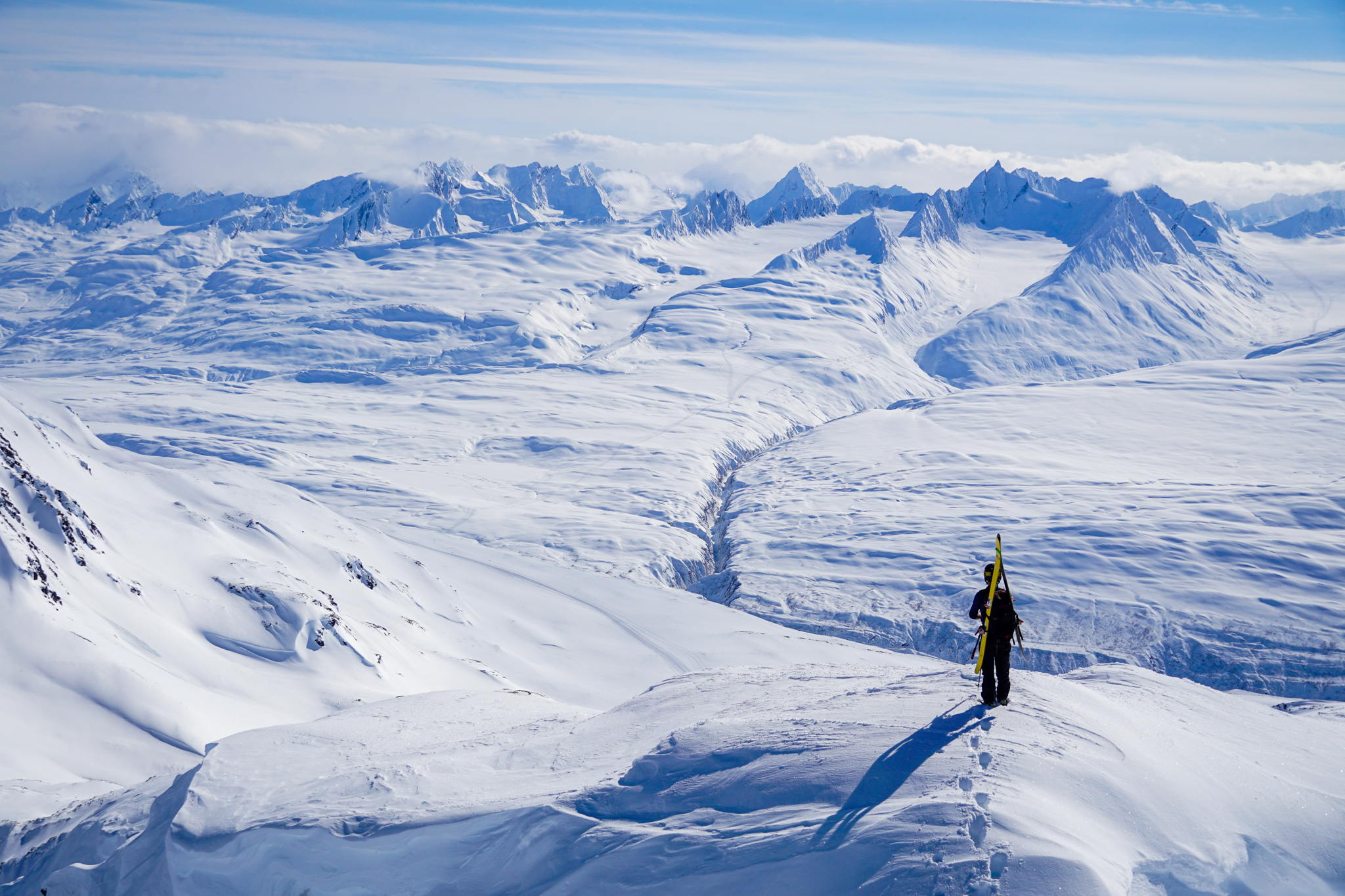
Beautifully done, photos and writing!
Thank you!
Followed the TAY Link. Tremendous write up. Super inspiring!
Glad you found it. Thanks!
Nice photos Kyle
Thank you!
Sounds like a hell of an adventure! Makes me feel grateful for what we have here, yet itching to head north…. One day. Happy turns!
Hey Evan, I agree we have amazing stuff here! Alaska is so different and so vast. I hope you get to experience it someday, definitely should be a bucket-list trip!
Wow! Thanks for sharing your amazing trip and pictures of spectacular beauty!
You are welcome, Kathy!
Great write-up and photos! Thanks. My wife and I are heading up there to meet up with some friends on a two-week trip similar to yours on April 5. We have reservations for the first 8 days in Anchorage and then we are flexible after that. It sounds like you found powder snow during a similar timeframe last year and I was just wondering– I assume mostly north aspects or did it just depend on where you were? It sounds like you were quite impressed with both the drive as well as the terrain around Thompson Pass out of Valdez so we may consider that too. Can I ask where you stayed in Valdez?
Yeah powder was only on shaded aspects at that point, and I think that is typical by that time of year if you’re not in the greater ranges.
I just stayed at a hotel in Valdez. Hotels there are pretty expensive for what they are, but options are limited.